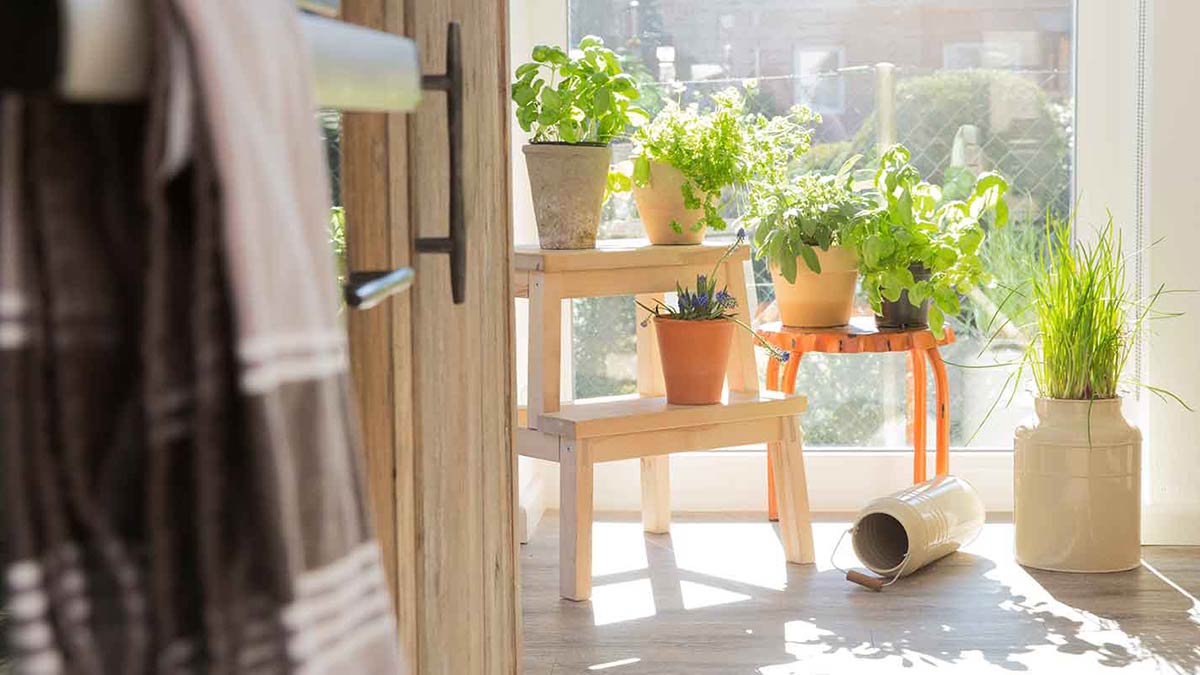Many once common single-use plastic items are now banned in Victoria. Here are sustainable, reusable alternative products to use instead.
Thank you for subscribing
You’ll be sent the latest news, exclusive offers and competitions to your inbox.
10 tips for growing your indoor herb garden

When spicing up a meal, nothing really matches the zing that a bunch of freshly-cut herbs straight from your kitchen can offer.
Whether it’s some garlic chives for your scrambled eggs or chopped coriander to finish off that stir fry, more people are turning to indoor herbs to kick their culinary skills up a notch. And the best part? They’re a great way to bring some green to your plate all year round.
Here are 10 tips to help you care for healthy, vibrant herbs.
Start with a bright and sunny spot
Before heading down to your local nursery to pick up a bunch of herbs, it pays to decide where you're going to put them first. Pick a spot on or near your kitchen bench with lots of sun. They'll be getting all their light through the window, so there's no real risk of sunburn (just make sure none of their leaves are touching the glass), and having them near your cooking area makes it easier for you to pick a few leaves when preparing a meal.
Choose the right herbs
One of the quickest roads to indoor herb disappointment is trying to grow herbs that don’t suit the climate you’re in. Indoor or not, some herbs - looking at you, basil - struggle to grow unless their very specific temperature requirements are met. Other herbs, such as rosemary and thyme, are hardier and require less management, so speak to the plant expert at your local nursery to determine which herbs are right for you and your home.
Choose the right size pot
Give your indoor herbs a spacious pot to live in. Most herbs bought from a nursery will come in a small plastic pot to save space, so it's important to re-pot them into something larger once you bring them home. Despite their compact size above the soil, herbs have a large and robust root system and need plenty of soil space to thrive. If you're ever unsure about which pot to buy, it's always better to err on the side of larger rather than smaller.

Having your herb garden means your dishes are always ready for that extra bit of natural flavour from your very own home. Image: Getty
Good drainage is a must
Another thing to consider when buying pots for your indoor herbs is drainage. If your pots have poor drainage, you run the risk of drowning your leafy companions, or damaging their roots. Most planter pots come with a saucer, but in case yours didn't, make sure you place something underneath it to protect your benchtop from water damage!
Get into a good watering routine
There’s two key things to keep in mind when watering: first, overwatering can be just as harmful to your indoor herbs as underwatering, so only water when the surface of the soil is noticeably dry. Second, don’t water the leaves. A slow and steady drizzle directly onto the soil is sufficient. If the leaves get wet and don’t dry, it could encourage fungus to grow.
Harvest with care
So you've put in the effort, and now your little herbs have grown some deliciously lush and vibrant foliage. It's time to harvest, but where to begin? A good rule of (green) thumb is to harvest a few sprigs at a time, and only when you need to. Try to harvest smaller, new-growth leaves and leave the big ones untouched - this encourages more bushier growth as the big leaves pump more energy into the rest of the plant.

Find the place in your home with the best lighting for your herb garden. Image: Getty
Quarantine new plants
Okay, so you’re getting the hang of this now and want to expand your herb collection. Before you introduce your new rosemary to your existing chive and parsley, remember to practice good hygiene! Keep the newcomer separate from your existing plants for at least a couple of weeks. This makes sure they don’t harbour any pests or diseases that could harm the health of your existing herbs. If you don’t spot the telltale signs of caterpillars or fungus, then introductions can be made.
Feed them from time to time
A commonly overlooked fact of plant life is that, in addition to water, our green friends need a good feed every now and then. There are plenty of plant food options out there and even tips on how to make your own, so do your plants (and your meals) a favour by feeding them every couple of weeks. They’ll thank you with rich, green foliage ripe for picking!
Let them out for some sun
Just because they're indoor herbs doesn't mean they have to remain indoors forever. Plants - just like people - appreciate some fresh air from time to time. If it's a particularly sunny day out (and if you have some outdoor space to use), take your plants on a small excursion outdoors and let them bask in unfiltered sunlight for a few hours. If you don't have a backyard or balcony, try placing them in front of an open window.
Start small
It’s tempting to want to go out and stock up on all the herbs and indoor gardening items you could possibly need, but the key to indoor herb success is to start small. Start with one or two herbs you know you’ll use often, and apply everything you've learned to make sure they grow hale and hearty. Then, once you're a more confident gardener, branch out and try some of the more challenging herbs. You'll be an expert in no time!


